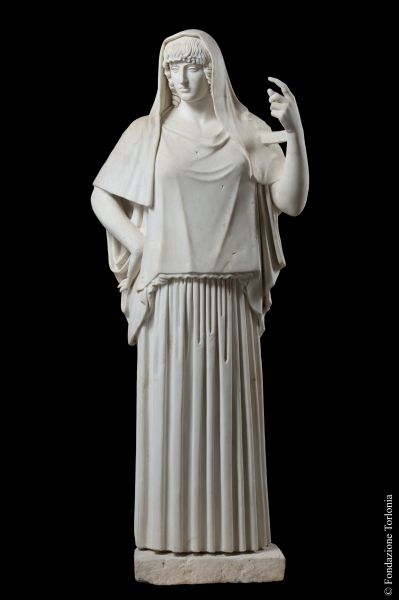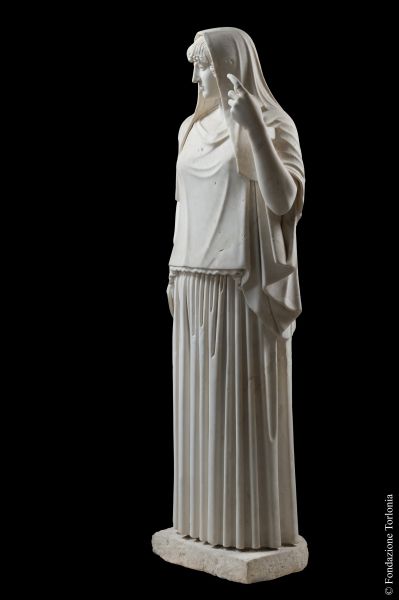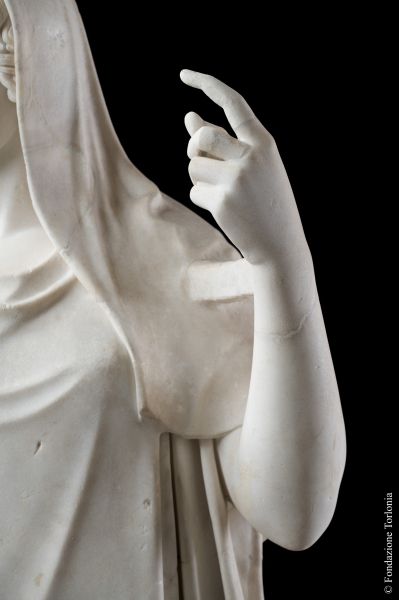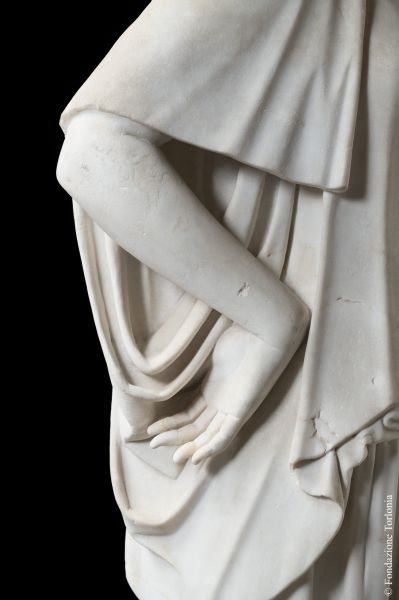




Statue of deity with peplum, known as Hestia Giustiniani
The fame of Hestia Giustiniani has a long history: it is echoed in the many writings and numerous graphic reproductions of the artists and visitors who frequented Palazzo Giustiniani, where it was exhibited in the Gallery, up to modern studies, which recognise it as a unique and exceptional integral replica of a bronze prototype, dating back to 460–470 BC.
The female figure stands imposingly, dressed in a peplum, the drapery of which is admirably highlighted in the lower part, while her head is protected by a large veil. This matronly aspect recalls the effigies of certain deities of the Greek pantheon, Hera and Demeter, although tradition has always attributed to this majestic female figure the name Hestia, which in Greek referred to the deity of the hearth and the house, perhaps in relation to the Latin goddess Vesta and her priestesses, the vestals.
Inventory: MT 490
Material: White marble
Technique: Work sculpted through the use of: chisels (also square-tipped and toothed) rasps
Dating: Imperial era
Origin: Giustiniani Collection
The fame of Hestia Giustiniani has a long history: it is echoed in the many writings and numerous graphic reproductions of the artists and visitors who frequented Palazzo Giustiniani, where it was exhibited in the Gallery, up to modern studies, which recognise it as a unique and exceptional integral replica of a bronze prototype, dating back to 460–470 BC.
The female figure stands imposingly, dressed in a peplum, the drapery of which is admirably highlighted in the lower part, while her head is protected by a large veil. This matronly aspect recalls the effigies of certain deities of the Greek pantheon, Hera and Demeter, although tradition has always attributed to this majestic female figure the name Hestia, which in Greek referred to the deity of the hearth and the house, perhaps in relation to the Latin goddess Vesta and her priestesses, the vestals.
Inventory: MT 490
Material: White marble
Technique: Work sculpted through the use of: chisels (also square-tipped and toothed) rasps
Dating: Imperial era
Origin: Giustiniani Collection




